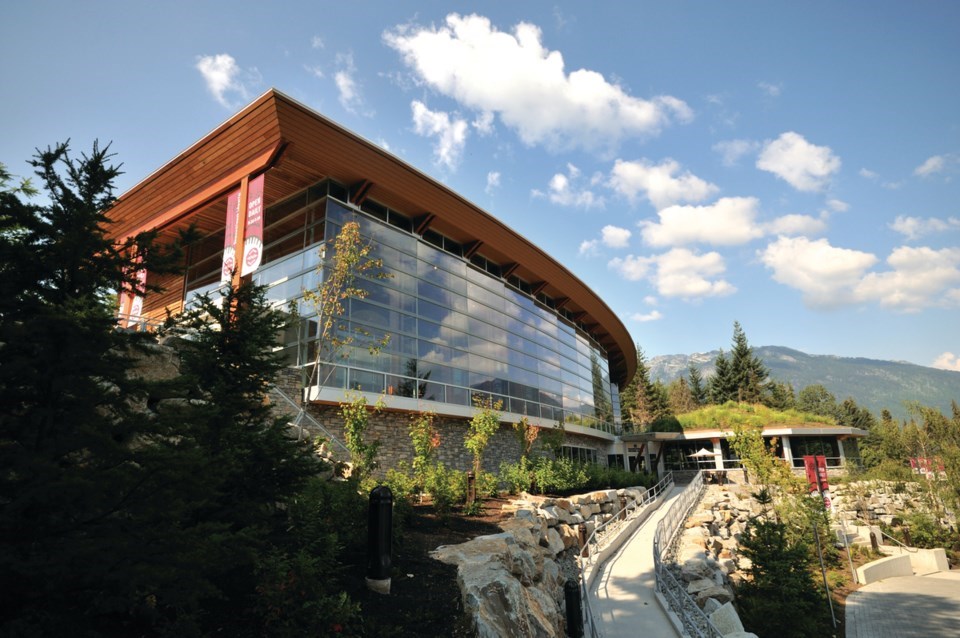Heather Paul started her new job as executive director of the Squamish Lil’wat Cultural Centre (SLCC) just four days before the COVID-19 pandemic struck in earnest last year.
That means she’s yet to have a business-as-usual day in nearly a year.
Instead, the business card holder that was meant for her new cards is filled with postcards of the SLCC’s cultural ambassadors.
“Every week I change it because I want to look at their faces—I want to know them,” she says. “I haven’t had a normal opportunity to know them.”
Like all cultural and art institutions the world over, the SLCC has taken a massive hit to its bottom line in the last year.
“We went from 90,000 visitors a year to 500 in July,” Paul says. “It was not unheard of by 11 a.m. to have had 400 people through the doors … and that’s gone.”
To that end, the SLCC was pleased to receive funding from Indigenous Tourism BC [ITBC] as part of that organization’s new three-year strategy to help Indigenous businesses survive the pandemic.
“It covers some of our operating costs,” Paul says. “We are a 100-per-cent Indigenous organization; we’re owned and controlled equally by Squamish and Lil’wat nations and Indigenous tourism is an important part of the Canadian tourism infrastructure.”
“[ITBC] also has some of the same goals we have: cultural revitalization, bringing back and bringing forth the true history of Canadians through the story of Indigenous people, the culture, art, and language that has been lost.”
In total, the funding came to $95,000. It’s just one source of funding the SLCC has accessed during this challenging time.
“[It’s been] anything from $5,000 to $95,000,” Paul says. “It’s a huge range. We keep talking about how there’s a grant overload right now. Our grant writers are exhausted …We’ve made some difficult decisions in streamlining administration and organization. A third of our leadership team is now Indigenous. We took COVID as a time to stop, re-evaluate, and we needed to change organizational structure to survive. But we’ve been able to create successful roots for Indigenous leadership to step into.”
The recent funding is part of ITBC’s three-year strategy to help businesses survive the pandemic, which includes an additional $5 million in funding for extra grants this year.
A survey of ITBC stakeholders shows that 91 per cent of businesses have been forced to close or operate in a limited capacity, while 74 per cent have laid off employees.
“By late March 2020, we had shifted a majority of our operations and marketing budget towards our Emergency Relief Funds to financially support our stakeholders at the start of the pandemic,” said Paula Amos, chief marketing and development officer with the ITBC, in an email. “Since then, in partnership with the provincial and federal governments, ITBC has implemented a variety of relief funds [and] grants for our stakeholders, including the BC Indigenous Tourism Recovery Fund. ITBC continues to assist further in 2021 with the Indigenous Alignment Strategy, a brand new three-year plan to rebuild and expand BC’s Indigenous tourism sector through the pandemic and beyond.”
Brenda Baptiste, chair of ITBC’s board of directors, said the new plan would refocus its previous Pulling Together corporate strategy by targeting areas that will have the biggest impact on recovery and growth for businesses and First Nation communities.
“Looking ahead, we are making space for recovery and continuing to rise together, with our actions being very intentional to support Indigenous tourism businesses and communities to succeed,” she said.
The strategy has six short-term goals to help reimagine and reinvent the post-COVID-19 tourism economy.
The goals include putting programs and tools in place to ensure the survival of 400 Indigenous tourism businesses across the province: further stakeholder engagement and strengthening of relationships; supporting businesses in adopting a digital marketing plan; an increased focus on domestic markets; and working to develop new Indigenous tourism experiences to entice future visitors.
On top of this, Baptiste said the strategy has tactics to directly support stakeholders through funding programs, training and skills development, foundations classes and roundtable discussions.
One of the biggest challenges for Indigenous tourism moving forward right now is the uncertainty of when normal travel will resume, explained Baptiste.
“With the uncertainties around the pandemic, it is unclear when people will be able to travel within B.C. and to B.C.,” she said.
“As well, for many Indigenous tourism experiences, the international markets are key to the survival of their operations. Shifting from international to domestic can be a challenge in such a short time.”
That is one of the concerns for the SLCC, Paul says.
“The majority of our guests are international. I think we have to refocus [on] Canadians and domestic tourism. What is our cultural experience? We don’t have to go to Paris to have a cultural experience. We have things all around us and connections to the land that we can learn,” she says.
Meanwhile, the SLCC temporarily closed during Whistler’s recent COVID-19 case spike. It’s set to re-open on Feb. 25 with its Indigenous Youth and Cultural Ambassador program starting a new session on Feb. 24.
Some ways to support the SLCC during this time is through new corporate sponsorship, donations, a membership, or grabbing take-away meals as part of the Bringing Home the Bannock program.
“There are a lot of ways to support us,” Paul says. “Even messages from the community to our cultural staff; they hear it every time.”
- With files from Elisia Seeber/ North Shore News




